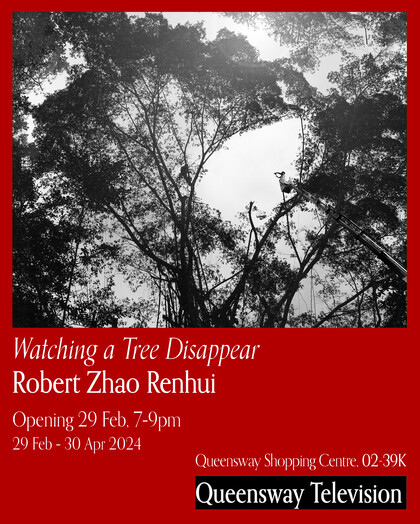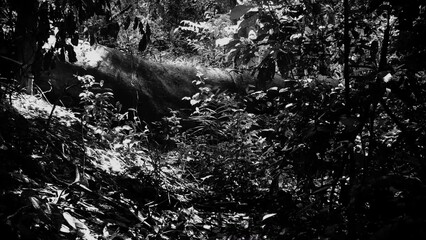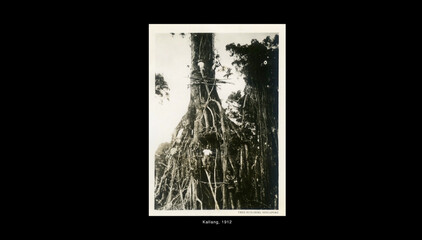Solo Exhibition Queensway Television, Singapore
Queensway Television, a video-centred project space by D. D. D. D., is pleased to present our first programme with Singaporean artist Robert Zhao Renhui.
The inaugural exhibition presents two works made 10 years apart—A Guide to Tree Planting (2014) and This Tree We Must Save, and Other Stories (2024)—both surrounding trees as their core subject. Trees have been an integral part of Zhao’s conceptual practice, beginning with his first solo exhibition titled If a tree falls in the forest (2009), which paradoxically did not feature any works with trees. The motif of trees, however, persists throughout his practice, as his fascination with the subject can be found in many later works, often in conjunction with an element of time.
The current exhibition’s title, Watching a Tree Disappear, implies the passing of time, and of change; these qualities reflexively present themselves within and between the two works. When viewed together, they invoke reflection upon our personal experiences and relationships with nature and time. Both works share the same source material—!e Substation Banyan tree that was cut down and transplanted away in 2014. Famed for its presence in the history of The Substation, a storied art institution in Singapore, the tree embodied the memories of the artistic community held in its court and witnessed the development of the then-nascent scene. The tree’s fast-growing nature resulted in roots growing into surrounding walls—symbolically and physically ingraining itself into !e Substation. Yet, this caused significant damage to the structure of the building, and the ongoing construction projects in the area eventually led to its inevitable removal. !is event provoked a range of emotions and reactions at the time.
Invited to do an exhibition celebrating !e Substation’s 25th anniversary in 2015, Robert Zhao created a series of works inspired by the Banyan tree. A Guide to Tree Planting was among the works he made at that time. Zhao was intrigued by the phenomenon of trees suddenly disappearing and reappearing elsewhere, representing an efficiency of the city-state that intrigues him. Imagining a situation where trees are built through magic, Zhao reverses the footage of the tree being cut down to create the illusion of it being built. Only presented as a series of photographs at the time, this is the first time the video work will be shown in Singapore. Deemed incomplete by the artist, as he wished to shoot the video differently, Zhao decided then to complete the work with another suitable tree.
A decade later, Zhao revisits the same footage to create the new video work, !is Tree We Must Save, and Other Stories. Ten years a"er the tree was transplanted, the artist presents a conflicted account of the episode as he juxtaposes recordings of the tree being cut with the timelapse of a growing secondary forest. Words are weaved into the video as Zhao contemplates the binary perspective of humanity’s actions and their consequences towards nature, seeking to consider alternative ways of thinking about our relationship with nature.
Through multiple ways of seeing, Robert Zhao prompts us to examine the different rates and methods in which trees appear and disappear in Singapore, a self-pronounced “Garden City.” Humanity, nature, and time share an inseparable and intricate relationship. !rough Zhao’s use of trees, he presents them as more than just a representation of nature; he imagines them as a reflection of humanity and time.




